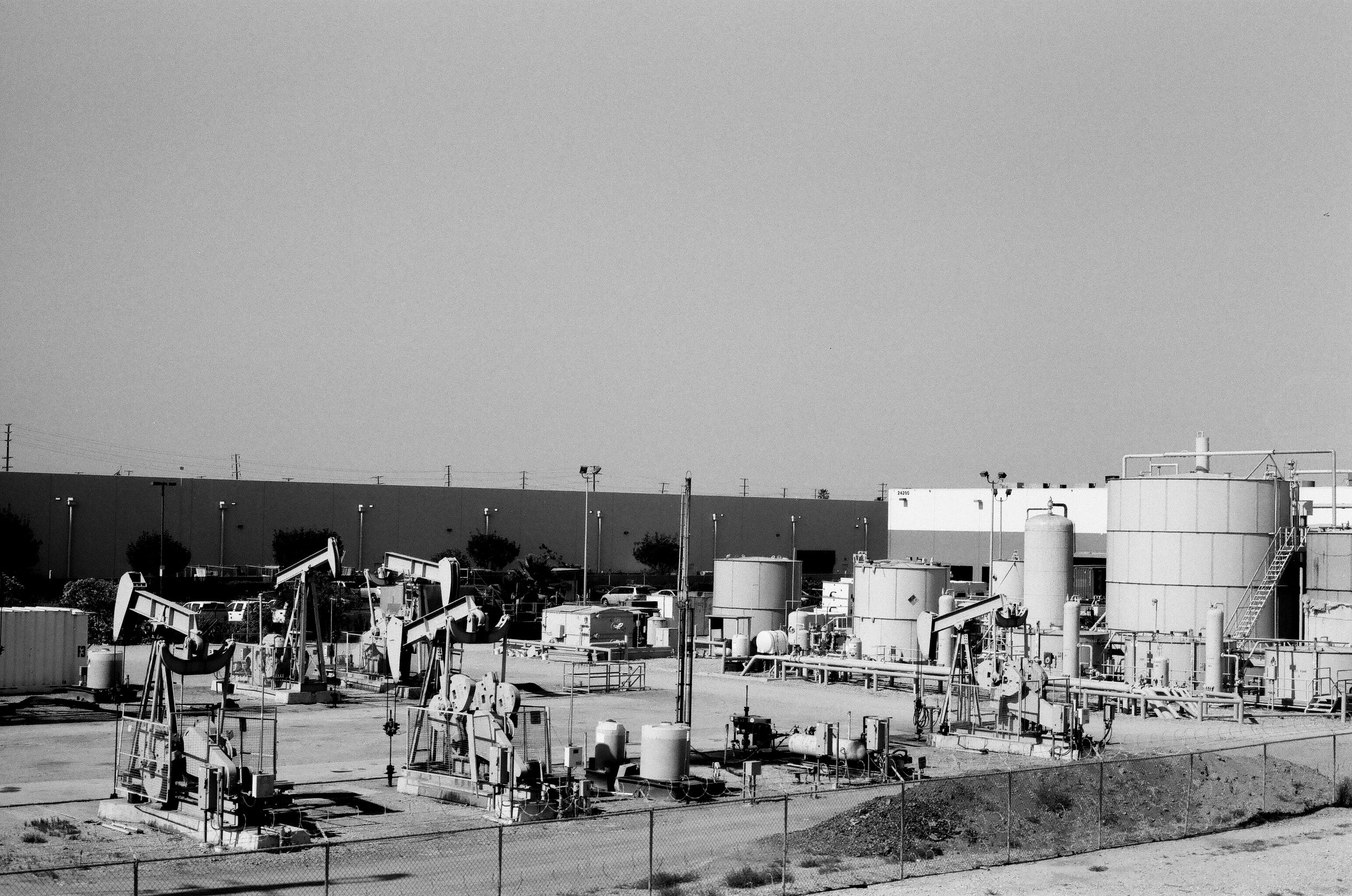Gas from the Past
By: Andrew Thomas
Recently, at least, the black gold rush of Los Angeles County has been overshadowed by the Hollywood scene. That wasn’t always the case. A 1926 Times magazine article described the Standard Oil Company of California, founded right in Los Angeles County, as the “largest individual producer of crude oil in the U.S.” From 1903 to 1930, California was the top oil producing state.
Even as recently as 1985, California was producing over 350 million barrels of oil per year. That number has since dwindled in half as of 2014. Given the state’s push towards clean energy and electric cars, as well as environmental legislation enacted after the Santa Barbara oil spill of 1969, the decline is not surprising. But, the breadth of the remaining oil infrastructure in Kern and Los Angeles counties is still remarkable.
The concrete jungle of Los Angeles has grown together, almost symbiotically, with the oil infrastructure of the California’s past. For many, it feels a bit odd to see towering steel oil derricks fixed throughout this major metropolis, especially given the perception that a more “typical” setting for an oil well in the United States is some barren field in the Midwest.
People who grew up in Long Beach saw oil wells as the norm -- just part of life. One friend in particular told me a joke about playing soccer as a kid and tripping over some above-ground oil piping right before taking his shot on goal.
Today, driving through Los Angeles County, you will still find pockets of drills pumping away, but they are often more disguised. Some of the more obvious clusters are near near the port Long Beach or Signal Hill. If you drive a little further south down the 405 or the 710, you just have to turn down the correct street to find a valley littered with oil wells dancing in the California sun.
As California continues to drop in overall oil production, will they tear them all down to make room for highrise condos? Probably. Or, maybe, we will leave these distinguished monuments of California’s past to rust quietly into our future concrete jungle.






